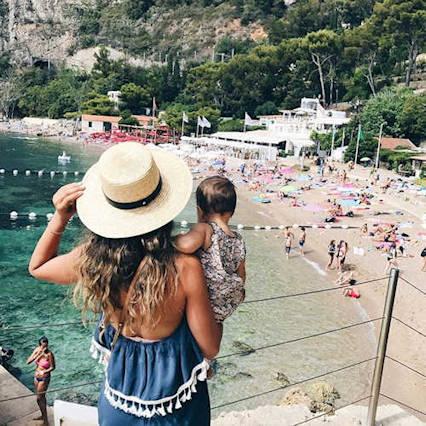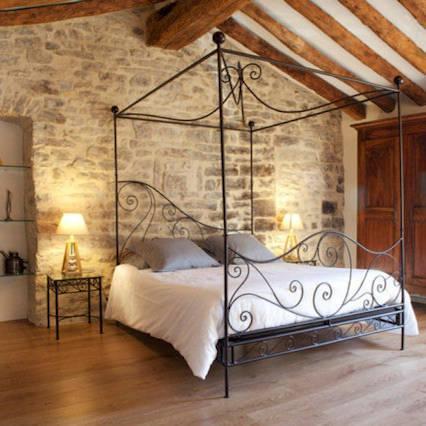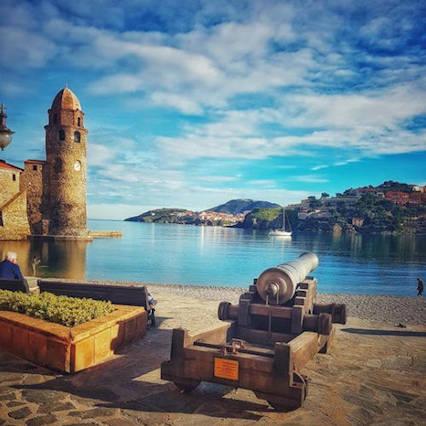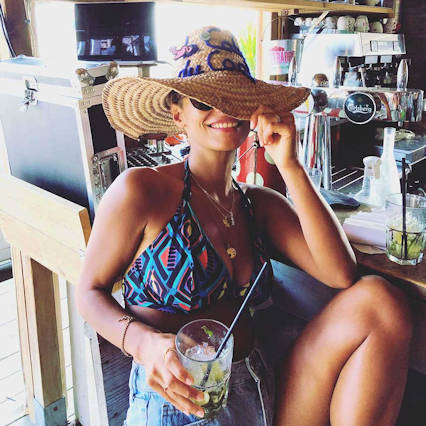- Last updated on .
- Hits: 17696
Where is the Languedoc region in France
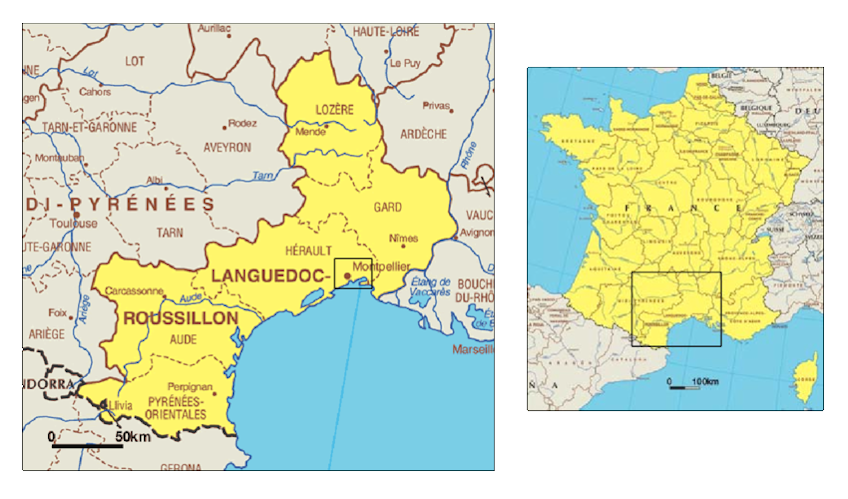 The Languedoc region in France is situated in the South of France, running northward along the Mediterranean coast from the border with Spain. The official name of the region is Languedoc-Roussillon, although this is often shortened to just the Languedoc. The Languedoc is a famous wine and tourism region in the South of France.
The Languedoc region in France is situated in the South of France, running northward along the Mediterranean coast from the border with Spain. The official name of the region is Languedoc-Roussillon, although this is often shortened to just the Languedoc. The Languedoc is a famous wine and tourism region in the South of France.
The Languedoc region, produces over a third of the total wine produced in France and many of its wines rival those of Bordeaux and Burgundy. Particular Languedoc wines to look out for include the red wines from Fitou, Saint-Chinian, Faugères, Pic-St-Loup, Corbières, Minervois, Montpeyroux and Costières de Nîmes; Rose wines from Faugères and Corbières; and the best white wine in the Languedoc region is undoubtedly Picpoul-de-Pinet. There is also a great sparkling wine, Crémant de Limoux, which is produced in the Aude town of Limoux.
Where is the Languedoc region in France?
The Languedoc is also an important holiday centre in France. Its warm Mediterranean climate, with long hot summers and over 300 days of sunshine; as well as its long sandy coastline; have led to it being developed into a major centre for vacations. Important holiday resorts have been built along the Languedoc coast and include such towns as Argeles-sur-Mer, St-Cyprien, Leucate, Gruissan, Serignan, Valras Plage, Cap d'Agde, le Grande-Motte and Le Grau de Roi. The coastline in the South of the Languedoc region, near the Spanish border, is perhaps the most dramatic. The Côte Vermeille, is formed where the Pyrenees meets the Mediterranean sea and the combination of the dramatic mountains and the crystal clear waters makes this a very special vacation area. The rest of the coastline is predominantly flat, with large sandy beaches and gentle warm tides.
The Languedoc also contains two large inland lakes (or Etangs), which are separated from the sea by a thin strip of headland. In the coastal villages dotted along these lakes (in towns and villages, such as Bouzigues, Mèze, Marseillan, Bages, Fitou and Gruissan) you'll find some of the best seafood in France.
The Languedoc in France is the location of some of the most significant French monuments and tourist attractions including the Castle of Carcassonne, the Pont du Gard (a Roman aqueduct), the Canal du Midi, the ancient walled-city of Aigues-Mortes, the Eastern Pyrenees and the roman town of Nimes.
Where is Languedoc in France: Departments
The Languedoc-Roussillon region, comprises 5 separate departments. Four of these departments run along the Mediterranean coast: the Gard, the Hérault, the Aude and the Pyrénées orientales. The fifth department is rather different, being the upland department of Lozère, which is located in the southern tip of the Massif Central.
The Gard department
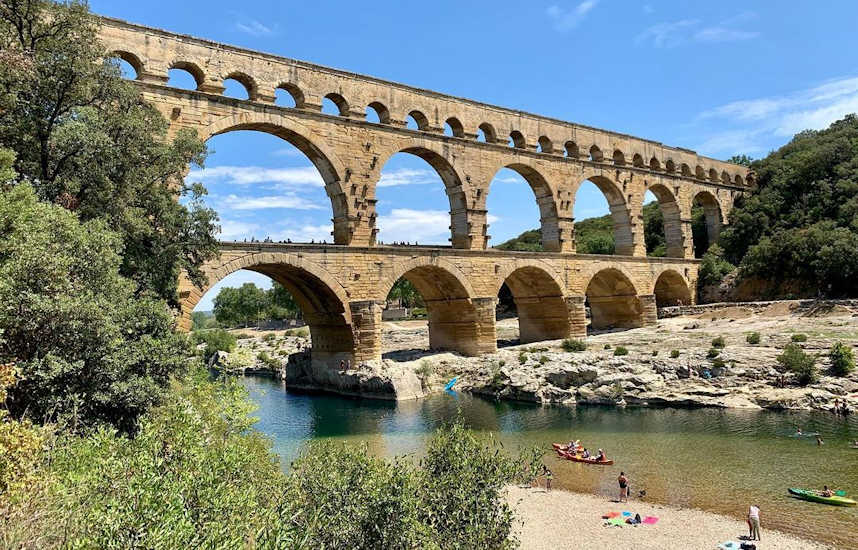 The Gard department (department number 30), was formed after the French Revolution and was named after the River Gardon. The Gard department borders both Provence and the Camargue and it shares the same laid back feel and old natural heritage of both these areas. The Gard area was settled by the Romans and the Via Domitia, the old Roman road from Rome to modern day Barcelona, was constructed in 118 BC. The capital of the Gard department is the city of Nimes, which was an important Roman settlement built by soldiers under the Emperor Augustus. In the centre of Nimes, you can still see remnants of the Roman times, including the Maison Carree (one of the best-preserved roman temples outside of Italy) and Les Arenes roman amphitheatre. But perhaps the most important Roman artifact, is the magnificent Pont du Gard aqueduct, that brought water from Uzes to Nimes.
The Gard department (department number 30), was formed after the French Revolution and was named after the River Gardon. The Gard department borders both Provence and the Camargue and it shares the same laid back feel and old natural heritage of both these areas. The Gard area was settled by the Romans and the Via Domitia, the old Roman road from Rome to modern day Barcelona, was constructed in 118 BC. The capital of the Gard department is the city of Nimes, which was an important Roman settlement built by soldiers under the Emperor Augustus. In the centre of Nimes, you can still see remnants of the Roman times, including the Maison Carree (one of the best-preserved roman temples outside of Italy) and Les Arenes roman amphitheatre. But perhaps the most important Roman artifact, is the magnificent Pont du Gard aqueduct, that brought water from Uzes to Nimes.
The Gard has always been an important textile centre (the cloth for Denim jeans came from Nimes - de Nimes became Denim) and during the 19th Century it also became an important railway junction.
On the coastline of the Gard department, on the Golfe de Lion, lies the ancient fishing port of Aigues Mortes. Well I say it is on the coastline, it is now actually 5kms inland, due to the river channel silting up. Aigues-Mortes was built in the 13th Century by Louis IX as a new port for France, but after the silt clogged up the access to the sea, a lot of the maritime traffic was transferred to nearby Marseille. Today however, it remains a well-preserved medieval town. Nearby to Aigues-Mortes, there is a fantastic beach called Espiguette, located near the resort town of Le Grau de Roi.
The Gard department contains many vineyards, but the landscape becomes more rocky and mountainous as you move inland. The villages tend to have a more Provençal flavour to them, with many of the old village houses using cut limestone, instead of the rough stone work of houses in the rest of the Languedoc. The Gard towns of Uzes and Sommieres are perhaps the most beautiful in Languedoc Roussillon.
The Hérault deparment
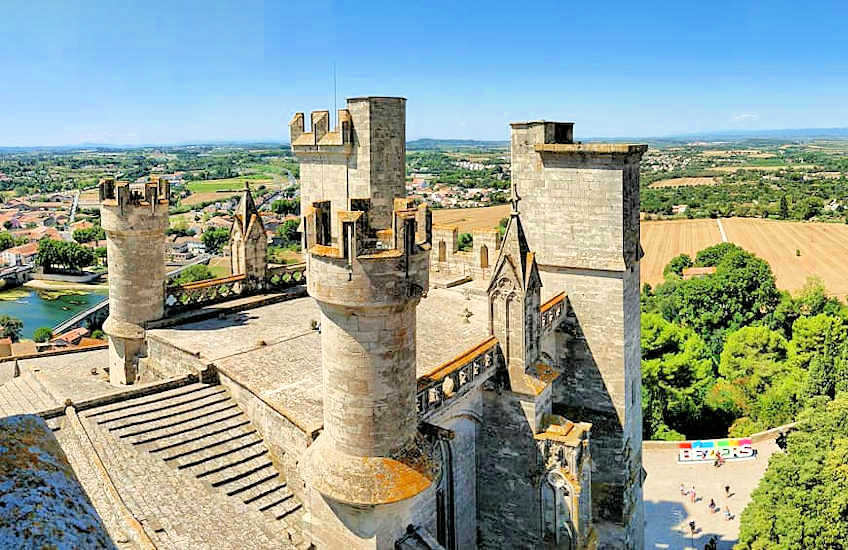 The Hérault department is named after the Hérault river. It was created in 1790 from part of the former province of Languedoc. The department is very diverse geographically, with beaches in the south, the Cévennes mountains in the north, and vineyards in between. Over 1,175,000 people live in the Herault department and the population has more than doubled since 1960.
The Hérault department is named after the Hérault river. It was created in 1790 from part of the former province of Languedoc. The department is very diverse geographically, with beaches in the south, the Cévennes mountains in the north, and vineyards in between. Over 1,175,000 people live in the Herault department and the population has more than doubled since 1960.
At the beginning of the 20th century, the wine produces in the Herault were devastated by a slump in sales combined with disease affecting the vines. Thousands of small scale wine producers revolted due to the deprivation caused, but this revolt was suppressed very harshly by the government of Georges Clemenceau.
In 1956 a damaging frost also wiped out virtually all of the olive trees in the region.
Today, the Herault department has one of the highest levels of unemployment in France. This is perhaps not all that it seems because many of the jobs in the department are seasonal: either in the tourism industry or in agriculture.
During the second half of the 20th century the Montpellier area underwent one of the most rapid population increases experienced anywhere in France and today it remains the most popular city in France for people to move to.
The coastal resorts of Le Grande-Motte, Marseillan, Cap d'Agde, Vias Plage, Valras Plage and Serignan Plage are important holiday centres in the Languedoc region.
The Aude department
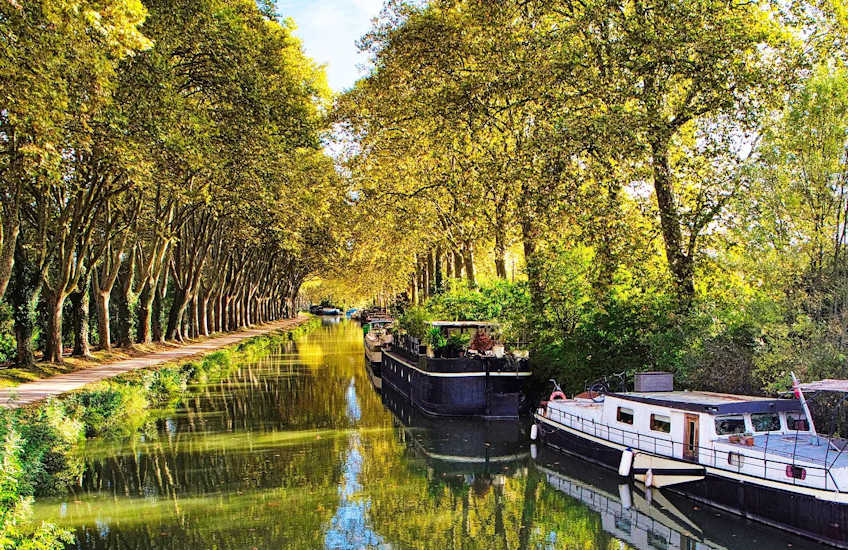 The Aude department in south-central is named after the river Aude, but it also goes under the title of "Cathar Country" on account of its many Cathar relics. The Aude department is located between the Mediterranean Sea and the Pyrenees mountains and it is surrounded by the departments of Pyrénées-Orientales, Ariège, Haute-Garonne, Tarn, and Hérault, with the Golfe du Lion to the east. In the east of the Aude department, the landscape contains coastal lakes, flat plains and long sandy beaches. The Corbières Hills form the central part of the department. To the north and west of the Aude Department, the Black Mountains provide spectacular scenary and excellent hiking trails.
The Aude department in south-central is named after the river Aude, but it also goes under the title of "Cathar Country" on account of its many Cathar relics. The Aude department is located between the Mediterranean Sea and the Pyrenees mountains and it is surrounded by the departments of Pyrénées-Orientales, Ariège, Haute-Garonne, Tarn, and Hérault, with the Golfe du Lion to the east. In the east of the Aude department, the landscape contains coastal lakes, flat plains and long sandy beaches. The Corbières Hills form the central part of the department. To the north and west of the Aude Department, the Black Mountains provide spectacular scenary and excellent hiking trails.
The Minervois area of the Aude department is an important wine region in France. In 2009, a wine from the Minervois was selected as the best win in the world by a panel of Grand Wine Sommeliers. Another important wine area is the Corbieres and the sparkling wines from Limoux are also celebrated in this area of France. The regional dish of the Aude deartment is the Cassoulet, a rich stew made from duck, pork and white beans.
The climate in the Aude department is primarily Mediterranean, with long hot summer months. However, during the autumn there are often many violent storms and strong winds. It is one of the windiest departments in France, with 300 to 350 days of wind per year. The Tramontane is a strong wind that plagues this area during October through to February. As a result, of the wind, the area is now an important centre for wind farms.
In the 13th century, the region saw the development of Catharism, a Christian sect which was quickly judged to be heretical by the Catholic Church. Faced with its growing strength in the counties of Carcassonne Albi and Toulouse, in 1209, Pope Innocent III, declared a crusade against the Cathars. The barons of the north united to form an army under the command of Simon de Montfort. The city of Carcassonne became the refuge of numerous Cathars.
Carcassonne has been restored to much of its medieval appearance. Narbonne is a tourist destination due to its Roman ruins. Other towns and villages worth visiting include Limoux, Quillan, Lézignan-Corbières, Lagrasse, Sigean and Leucate. The Aude department has many castles such as the castles of Quéribus and Lastours. The Fontfroide Abbey, is also an important tourist site.
The Pyrénées Orientales department
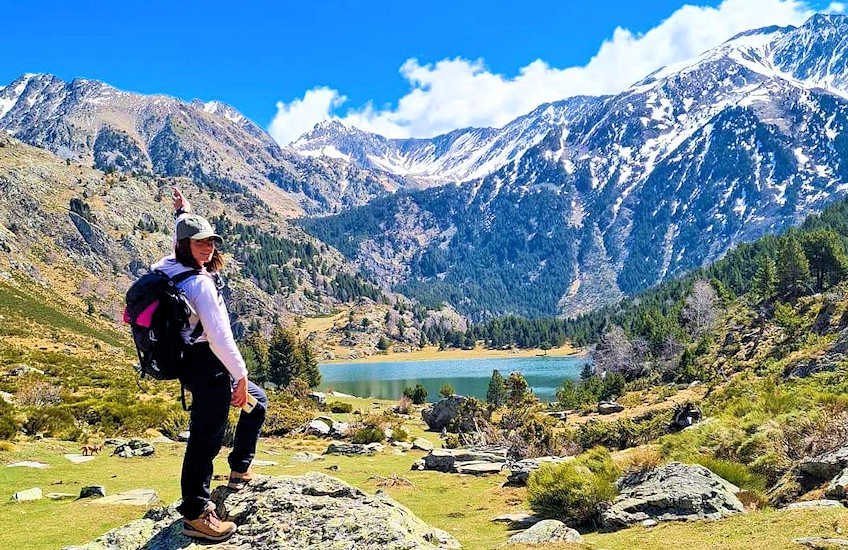 The Pyrénées-Orientales department is located in the South of the Languedoc region of France bordering Spain and the Mediterranean Sea. Prior to the Treaty of the Pyrenees in 1659, most of the present department was part of the former Principality of Catalonia, within the Kingdom of Spain, so the majority of it has historically been Catalan-speaking. The modern department was created during the French Revolution under the name of Roussillon. The department was invaded by Spain in April 1793, but recaptured thirteen months later during the War of the Roussillon. The name of the department was then changed to Pyrénées-Orientales. Today you can still hear a mixture of French, Catalan and Occitan spoken in the region.
The Pyrénées-Orientales department is located in the South of the Languedoc region of France bordering Spain and the Mediterranean Sea. Prior to the Treaty of the Pyrenees in 1659, most of the present department was part of the former Principality of Catalonia, within the Kingdom of Spain, so the majority of it has historically been Catalan-speaking. The modern department was created during the French Revolution under the name of Roussillon. The department was invaded by Spain in April 1793, but recaptured thirteen months later during the War of the Roussillon. The name of the department was then changed to Pyrénées-Orientales. Today you can still hear a mixture of French, Catalan and Occitan spoken in the region.
The Pyrénées-Orientales department consists of three river valleys: Agly, Têt and Tech – all of which descend from the Pyrenees to the eastern Plain of Roussillon. The area is famous for its sweet wines such as the Muscat de Rivesaltes and Banyuls.
The capital of the Pyrénées-Orientales department is Perpignan, a city which has a clear Catalan heritage. Other important towns include Banyuls-sur-Mer (famous for its Banyuls wine and the birthplace of scupltor Aristide Maillol), Céret (considered to be one of the birthplaces of cubism, an art form that is displayed very effectively at Musée d'Art Moderne in the town), Collioure (a beautiful coastal town inhabited by many famous painters), Prades, (site of the Catalan Summer University) and Prats de Mollo and Salses (both of which contain impressive castles).
Along the Mediterranean coastline of the Pyrénées-Orientales department, you will find important resort towns at Argeles-sur-Mer, St Cyprien and Leucate.
The Lozère department
 The Lozère department is named after Mont Lozère, and is situated on the southern tip of the Massif Central. This inland department was first created in 1790 after the French Revolution. Lozère is the northernmost part of the old Languedoc-Roussillon region and is surrounded by the departments of Cantal, Haute-Loire, Ardèche, Gard and Aveyron.
The Lozère department is named after Mont Lozère, and is situated on the southern tip of the Massif Central. This inland department was first created in 1790 after the French Revolution. Lozère is the northernmost part of the old Languedoc-Roussillon region and is surrounded by the departments of Cantal, Haute-Loire, Ardèche, Gard and Aveyron.
The Lozère department is largely mountainous, but also contains some plateau (such as the Plateau d'Aubrac) and numerous rivers, including the Tarn, whose source is on Mont Lozère, and which flows through the Gorges du Tarn in the Causses. The highest point of the department is Mont Lozère at 1,702m.
The South East of the Lozère department contains the Cévennes. The Cevennes area has some wonderful scenary and is a popular area for hiking and mountain biking.
The Lozère department has always been famed for its cheese, indeed the Roman historian Pliny, praised the cheeses from this area.
The main activities are cattle farming and tourism (the Aubrac cow celebrated within France for the quality of the beef it produces).
The Lozère department is one of the least populated departments in France, with just 77,000 people living there (or 15 people per square km). Lozère also has one of the lowest rates of unemployment in France, but this is often the result of many inhabitants leaving the area in search of work in Lyon, Marseille and Montpellier.
Where is Languedoc France: main cities & towns
The Languedoc region in France has some of the most dynamic and beautiful cities in France.
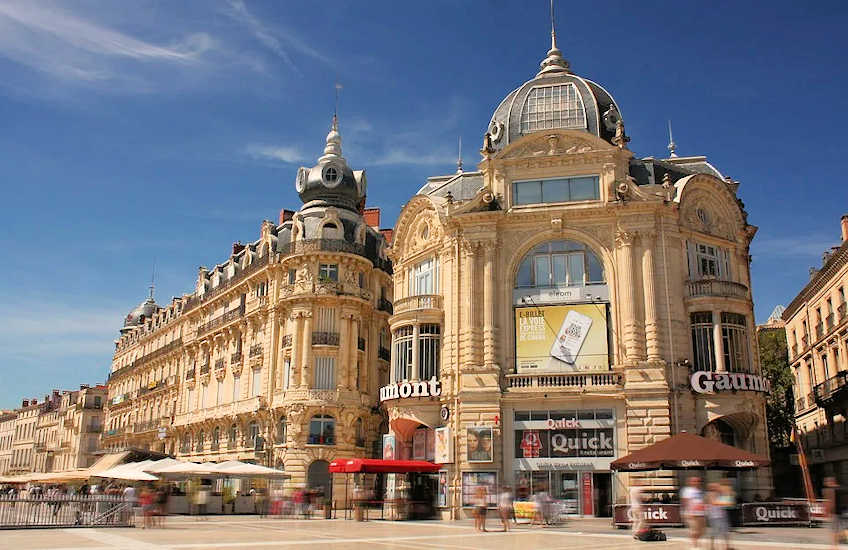 Montpellier: is the regional capital of Languedoc, is situated in the north of the Herault department. It is the fastest growing city in France, with many new bio-tech and medical industries growing up around the two universities in the City. Located just 10 kms from the Mediterranean coast, Montpellier combines dramatic new architecture with its old centre full of narrow winding streets. Other highlights in the city include the internationally famous art gallery: Musée Fabre, a smaller version of the Arc de Triomf; Les Jardins des Plantes, a large Botanical gardens; the Champs de Mars, a huge park containing promenades; and Le Corum, which houses a new Opera house and an exhibition centre. and other sites.
Montpellier: is the regional capital of Languedoc, is situated in the north of the Herault department. It is the fastest growing city in France, with many new bio-tech and medical industries growing up around the two universities in the City. Located just 10 kms from the Mediterranean coast, Montpellier combines dramatic new architecture with its old centre full of narrow winding streets. Other highlights in the city include the internationally famous art gallery: Musée Fabre, a smaller version of the Arc de Triomf; Les Jardins des Plantes, a large Botanical gardens; the Champs de Mars, a huge park containing promenades; and Le Corum, which houses a new Opera house and an exhibition centre. and other sites.
Nimes: the old Roman town of Nimes, is the capital of the Gard department. With its old historical centre and remarkable Roman remains, including the Amphitheatre and the Maison Carrée, Nimes is a great place to spend a day in.
Carcassonne: situated in the Aude department, the town of Carcassonne is famous throughout France on account of its splendid castle. Carcassonne's castle, a UNESCO World Heritage site, is the second most visited monument outside of Paris. The scale of the Castle, with a full town located within its walls, is amazing.
Narbonne: this former Roman city was once the regional capital of the Languedoc province. At the centre of Narbonne, there is an impressive cathedral, underground Roman grain-store, and canal-side quays. Narbonne is situated in the Aude department.
Agde: was first settled by the Greeks and this small city has an attractive riverside, old streets, and a nice daily market.
Béziers: is a traditional Languedoc city which expanded rapidly during the 19th Century on the back of the regional wine trade. Beziers is starting a bit of a renaissance, with the centre of the town undergoing many refurbishments. The cathdral at Beziers provides some amazing views over the Orb valley. Beziers is also home to perhaps the biggest and certainly the liveliest festivals in the South of France.
Sète: the old fishing port of Sete, is built around a rocky promontory. The Old town is bisected by canals and here you will experience the unique sport of water-jousting, held in the summer months, beaches, boat trips.
Uzes: the beautiful town of Uzes, situated in the Gard department is a delightful town to spend time in. The old Mansions that are dotted about the town, are witness to Uzes former wealth.
Sommeries: this picturesque town located in between Montpellier and Nimes, has a wide river running through it and a fantastic Saturday market that takes over the town (see Sommieres tourist information for more details)
 Pezenas: Walk the old streets of Languedoc's former capital. Once the stomping ground of Molliere and now a haven for antiques and a fabulous Saturday market. Pezenas is probably the prettiest large town in the South of France (although Uzes and Sommiers may have something to say about that!). We just love wandering around the market on a Saturday and taking a detour off into the old Jewish quarter with the jewellers, cafes and boutiques. It is no wonder that Pezenas is such a draw for people all year around. (see Pezenas tourism for more details).
Pezenas: Walk the old streets of Languedoc's former capital. Once the stomping ground of Molliere and now a haven for antiques and a fabulous Saturday market. Pezenas is probably the prettiest large town in the South of France (although Uzes and Sommiers may have something to say about that!). We just love wandering around the market on a Saturday and taking a detour off into the old Jewish quarter with the jewellers, cafes and boutiques. It is no wonder that Pezenas is such a draw for people all year around. (see Pezenas tourism for more details).
Collioure: The picturesque beach town of Collioure is an idyllic place. It is situated in the very south of France, 26 km (approx. 15 miles) from the Spanish border. It has always attracted a host of artists because of its 'special light' and you can follow the unique art trail through the town (see Collioure Art Trail for more information). Its small Catalan harbour is sheltered by a quiet bay where the Pyrenees meets the Sea. You can count on having a splendid swim at one of the small coves. (see Collioure tourist information for more detail)
Aigues-Mortes: this medieval walled town romantically set among the dunes and plain of the Camargue. A tour of Aigues-Mortes' fortifications and grid pattern streets is a must on any visit to Languedoc-Roussillon. Surprisingly for such a tourist haven, the restaurants around the main square are actually quite decent . Our preference though is to buy sandwiches and have a picnic on the grassy slopes of the ramparts. One of the best times to visit Aigues-Mortes is during the bull festivals held in late May and in early September. The summer Thursday night 'spectaculars' are also worth attending. (see Aigues-Mortes tourism for more information)
Perpignan: is the capital of Roussillon. Its Spanish influence predominantly comes from the thousands of refugees that fled Catalonia at the end of the Spanish Civil War. But it has also been part of the Catalan-Aragonese Crown, before it was brought under French control in 1659. The most important building here though is the Palais des Rois. The Kings of Mallorca made Perpignan their mainland capital and brought with it propsperity from cloth-making
Where is Languedoc in France: the cuisine
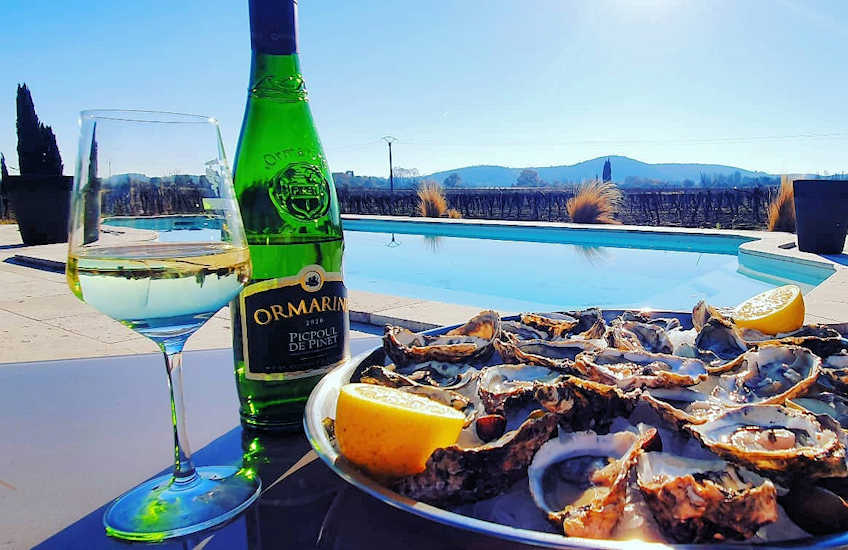 The cuisine in the Languedoc is as diverse as the geography. A jaunt along the Etang de Thau, the large lagoon between Sète and Agde, reveals mile upon mile of oyster, mussel and whelk beds, the products of which end up on plates throughout the region. A visit to Sète should include a taste of its seafood version of a Cornish pasty, the tielle, filled with octopus, squid and spices.
The cuisine in the Languedoc is as diverse as the geography. A jaunt along the Etang de Thau, the large lagoon between Sète and Agde, reveals mile upon mile of oyster, mussel and whelk beds, the products of which end up on plates throughout the region. A visit to Sète should include a taste of its seafood version of a Cornish pasty, the tielle, filled with octopus, squid and spices.
Collioure remains a major producer of anchovies, despite the intensive nature of its processing.
Meat lovers can get their fill with the south-west's most celebrated dish, cassoulet, the ingredients of which are debated endlessly by the chefs in the three main locations – Carcassonne, Castelnaudary and Toulouse – but which normally includes haricot beans, sausage and confit of duck or goose.
Wash all of this down with wine from France's largest wine-making region. For many years, Languedoc-Roussillon wine-makers concentrated more on quantity than quality, but improvements now produce high-class wine with appellations including Corbières, Minervois, Faugères and Pic St-Loup. The rugged Catalan coast is known for its vin doux, the sweet wine from Banyuls.
The small town of Limoux in the Aude region, produces its own sparkling wine, blanquette de Limoux, said to have been made a good 100 years before Dom Pérignon made his.
